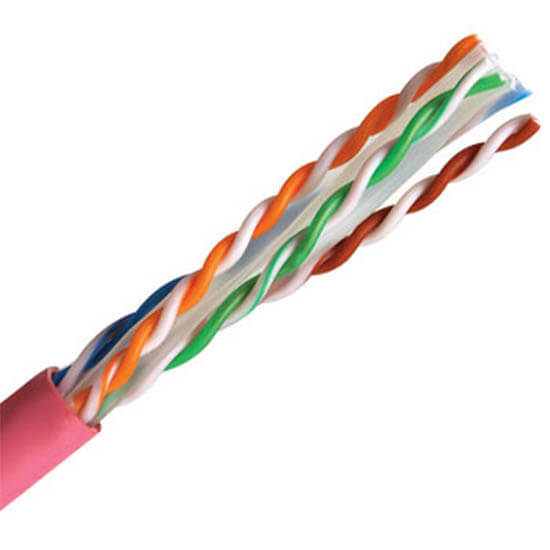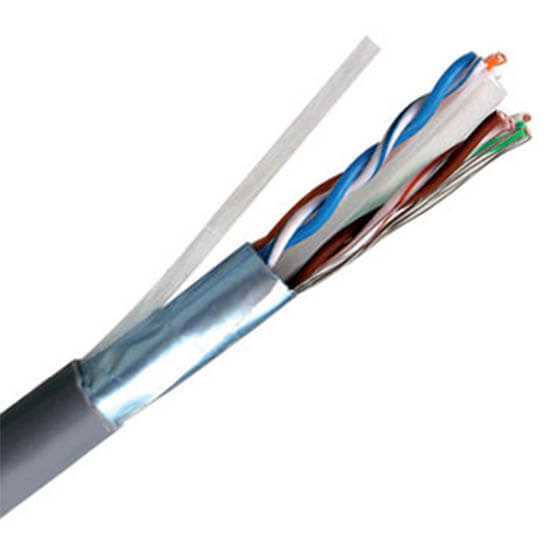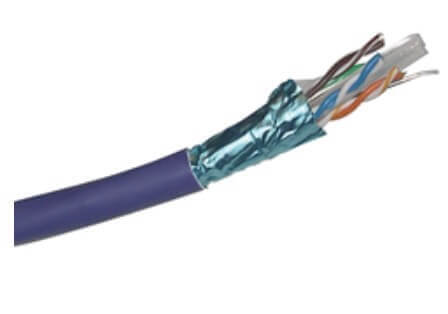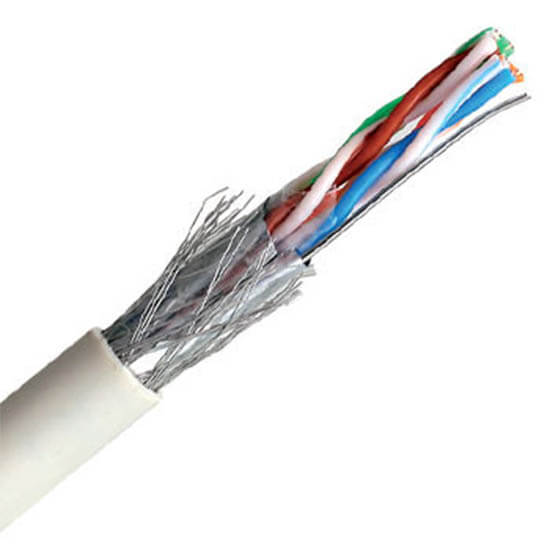Ethernet Cable: The Ultimate Guide
Ethernet Cable: The Ultimate Guide

Speed up your learning curve this 2019 on the latest Ethernet technologies, fads, and operation in this definitive DIY guide and how-to’s on network cabling
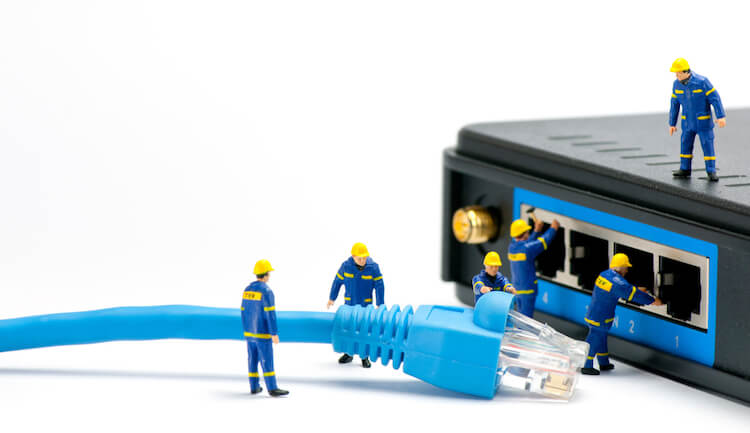
Ethernet is the pulsing veins of every client-server network. The Ethernet topology is not as confusing as you think. You can buy and install your own wired system if you are very keen on understanding how everything works. Even if you’re not the one installing it, you have to know what lies ahead of your network system to solve probable network problems at a faster pace.
That’s why we summarized everything you need to know in this guide before you embark on your Ethernet cable installation journey (that would most likely turn into a disaster if you didn’t do it properly).
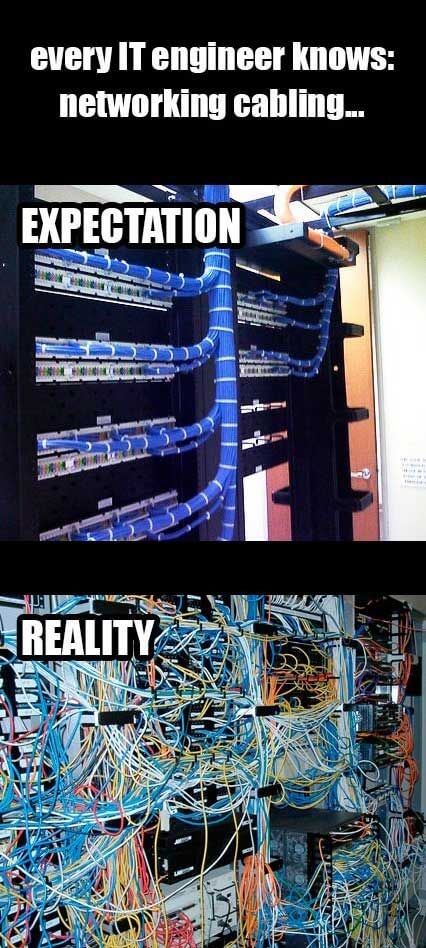
What you can expect to find here
In this practical and comprehensive DIY guide, you will have a quick and knowledge-worthy exploration on the basics of Ethernet - what it is, what it does, how it works, what the different types are, and how its shield and rating can affect the performance of your network connectivity.
Then we go further on learning how you can buy, install and build your own Ethernet system empire - something that would make you feel a lot more like a professional IT when you do all this stuff on your own.
Feeling thrilled? Let’s dive right in!
What is Ethernet?
Ethernet is a Local Area Network (LAN) technology that connects several computers or devices using a wired connection. It also has Wired Area Network (WAN) applications.
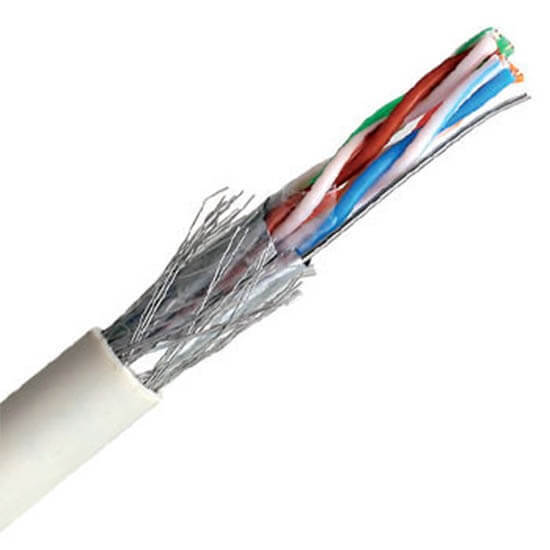
An Ethernet cable is a twisted pair copper cable designed to transmit and send data at a fair distance of 1 to 100 m. You can be able to share files, play games, send and receive emails and share printers. This sums up the best definition of an Ethernet cable.
Latest Ethernet Standard
Standards are our way of life. In the network cabling platform, standards dictate how Ethernet cables should be manufactured to meet specific network demands.

There are several Ethernet standards such as the American National Standards Institute (ANSI), the International Standards Organization (ISO) standard, the International Telecommunication Union (ITU standard), and the Institute of Electrical and Electronics Engineers (IEEE) standard.
You can find the latest Ethernet standards under the IEEE 802.3. The IEEE 802.3 will be your ultimate basis for knowing which type of Ethernet category cable you can use in your specific need.
IEEE 802.3 Ethernet Standards
IEEE 802.3 generally specifies the bandwidth of the LAN, such as the 10BASE-T Ethernet, Fast Ethernet, and Giga Ethernet.
Fast Ethernet vs. Giga Ethernet
Basically, the ultimate difference between the different Ethernet standards is it’s speed. Fast Ethernet (100 Mbps max) can deliver data faster then 10BASE-T Ethernet (10Mbps), while Giga Ethernet (1Gbps) is speedier than Fast Ethernet.
Bandwidth, Latency and Interference: What are these?
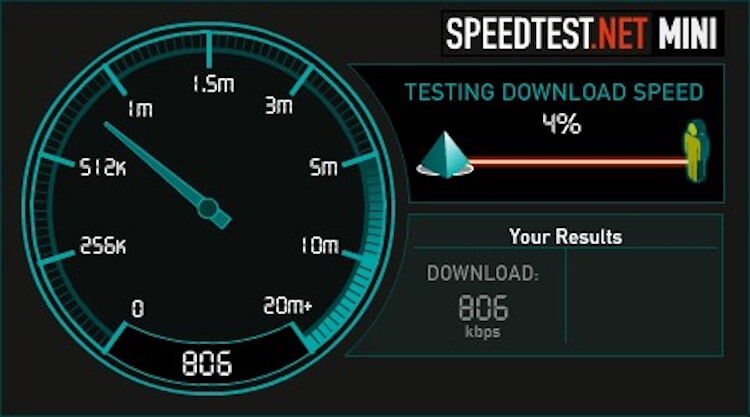
Bandwidth, latency and interference are some of the common terms associated with the Ethernet topology. Better know them now as you will definitely encounter these terms A LOT.
Bandwidth
You know that you can regulate the water coming out of the faucet by simply turning the valve to restrict or liberate the flow of water. Likewise, bandwidth also works the same.
If a cable standard has a higher bandwidth, it means more data per second can travel through a channel.
By definition, bandwidth is the rate or speed at which data can be transported from one point to another at a given time.
So when you come across the bandwidth specified by an Ethernet cable manufacturer, you know that it communicates how efficient the cable can perform your data transfer, voice communication and video graphics streaming. The higher the bandwidth specification of the cable, the more you can perform high speed applications as you receive more data every second.
You wouldn’t choose a cable with a lower bandwidth capacity if you are a professional, hardcore gamer, right? Later in this guide, we will tell you which is the best Ethernet cable to use on what application.
Latency
Latency is the delay information experiences when being transmitted from one point to another. This is expressed in milliseconds or ms. When you are testing your internet speed using speed tests, you can see latency expressed as the ping rate.
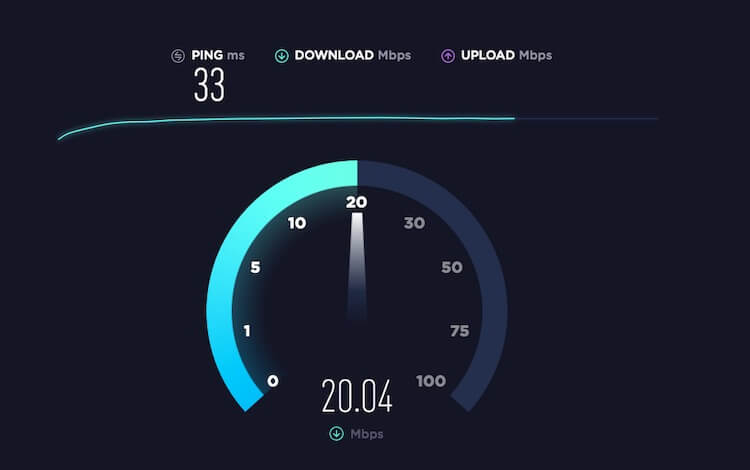
Still confused? Given the analogy above about the water valve and its flow:
- Bandwidth is like the amount of water pouring from the faucet with regards to the size of the valve opening; the smaller the opening, the smaller its output, because it only allows a fewer amount of water to pass through.
- Latency is like the water traveling in the pipe.
Latency is important as it goes hand-in-hand with bandwidth to deliver the speed of the Ethernet. Just imagine how 6 cars traveling in a one way road (low latency and small bandwidth) as compared with 6 cars traveling on a 6-lane freeway (low latency and high bandwidth).
Interference
Signal interference is the noise that is caused by EMI/RFI/ESI. While Ethernet cables are praised for being inexpensive and easy to install, its copper media can be a disadvantage for delivering data without interference. Thankfully, copper shielding does the trick to avoid this phenomenon.
There are essentially four forms of signal interference:
- Static Noise: a type of noise that happens when signals are disturbed by electric field. Foil shields can easily eliminate this.
- Magnetic Noise: a type of noise that originates from motors, especially AC. Transformers can also be the cause. Twisted pairs can eliminate this type of noise.
- Common Mode Noise: this occurs when an electric current passes through grounds.
- Crosstalk: this happens when DC currents or AC currents are superimposed between the wires.
10BASE-T Ethernet | 100BASE-T Fast Ethernet | 1000BASE-T Gigabit Ethernet | 10Gigabit Ethernet | |
Standard | IEEE 802.3 | IEEE 802.3u | IEEE 802.3z | IEEE 802.3ae |
Bandwidth | Offers 10Mbps speed | Offers 100 Mbps speed | Offers 1 Gbps speed | 10 Gbps (10,000 Mbps |
Delay | More delay | Less delay | Least delay | Almost no delay |
Configuration | simplest | Simpler than Gigabit Ethernet | Sophisticated configuration | Sophisticated and can create errors |
Application | LAN protocols | LAN protocols | large LAN environments | Metropolitan Area Networks (MANs) |
What does an Ethernet Cable do?
You can use Ethernet cables stabilized connection to the internet. Ethernet cables are used for file sharing and transferring information for wired, high-speed DSL connection. You can also find it in router connections, hubs, switches, printers, telecommunications, voice and data transfer, workstations and gaming interconnections.
How Network Ethernet Cables Work?
Ethernet Cables consists of twisted pairs of wires with each pair working out to cancel EMI or electromagnetic interference together with external interference. The cables are terminated with 8P8C modular connector (RJ45) used in short distanced patch cables. Ethernet bulk cables are used in longer runs in installations and structured cabling.
Demystifying Ethernet Cable Categories: What are the Different Types of Ethernet Cables
Category cables are built based on the different specifications to support different bandwidth capabilities to meet certain applications.
What does “CAT” mean?
You may find this term quite often when you browse google on Ethernet cables. “CAT” is simply short for Category, which is found at the beginning of the name of the Ethernet cable type. Example, Cat5e or Cat6 Ethernet cable.
What does the category cable number stand for?
Basically, the higher the Category number of the cable, the higher its bandwidth capability and frequency. It follows that it’s also naturally more costly. But that doesn’t mean that you have to buy an Ethernet cable that has a higher speed capability just because you need a strong and stable internet connection. If you are a small business owner, you can buy Cat5e or Cat6 depending on which works for you.
Category 5e
Cat5e is a next generation Ethernet cable succeeding Cat5 cable. As compared with Cat5, it provides enhanced data transfer and lower crosstalk. Unfortunately, Cat5 is obsolete nowadays. Today, the Cat5e version is a popular cable in network communications handling up to 10/100 Mbps TIA/EIA standard at a 100MHz bandwidth.
Category 6
Cat6 cable delivers higher data rate than Cat5e cable. Cat6 cable can support the high speeds required by the 10G-BaseT (10Gig) ethernet standard. It is designed to further minimize crosstalks and noise as compared with Categories with lower generation numbers. It is also backwards compatible with category 5 cables and equipment.
Category 6A
Cat6A is an “augmented” Category 6 cable that offers superior performance than its lower generation cables. It is notable for its improved alien crosstalk characteristics that allows 10GBASE-T to be run for 100 meters. As compared with Cat 6 cables, Cat 6a cables support twice its bandwidth, and can be run at longer cable runs without losing its transmission capability.
Category 7
Cat7 cable represents the cable standard for the seventh generation and is a top choice for future-proofing data centers and network convergence. Of course it follows that Cat7 cables are more expensive than the other lower generation cables.
The cable is built with shielding for an enhanced protection against RFI and EMI for a completely noise-free, and high security applications. It can be terminated with modular connectors such as 8P8C GG45 connectors, ARJ45, or with the popular TERA connectors.
Category 8
Category 8 is the newest and fastest network cable released in the market early in 2019. It is built to augment the future of copper cabling as it provides tons of benefits for data centers. Cat8 cables support up to four times the bandwidth of Cat6A copper cables. It is approved to support up to 2000 MHz for a standard distance of 30 meters to 36 meters. Cat8 can be used for 25 and 40GBASE-T applications.
Below is a summary of the Category cables.
|
Category |
Frequency |
Ethernet Signal Supported |
Shielded |
Connector |
Applications |
|
100 MHz |
10/100Base-T |
Optional |
8p8c, RJ45 |
Small office, home office, schools |
|
|
250 MHz |
10/100Base-T |
Optional |
8p8c, RJ45 |
Small office, home, schools |
|
|
500 MHz |
10/100Base-T, 10 Gigabit Ethernet |
Optional |
8p8c, RJ45 |
Large enterprise, universities, high speed application |
|
|
600 MHz |
10/100Base-T, 10 Gigabit Ethernet |
Foiled and Shielded |
GG45, TERA |
Data center backbone, high speed and bandwidth intensive applications |
|
|
1000 |
25/40GBASE-T25 Gigabit Ethernet |
Foiled and Shielded |
8p8c, RJ45 |
High Speed Data center backbone, super high bandwidth applications |
Shielded vs Unshielded
By far, you already know the basic concepts on Ethernet cable and the difference between each category. The next thing you should learn about is the cable shielding.
Since Ethernet cables are made of twisted copper metal, interference is a normal thing to occur. As mentioned earlier, EMI can affect the transmission quality of the cable and crosstalks are also normal. That is where cable shielding is needed. Note that Fiber optic cables are normally shielded.
For Ethernet cables, there are four shielding types:
|
Cable Type |
Characteristics |
Diagram |
Applicable Location |
Available at OTSCABLE |
|
|
UTP Unshielded Twisted Pair Common names: pair in metal foil, shielded twisted pair, screened twisted pair |
A 100-ohm copper cable where the twisted pairs of wires are unshielded Smaller in diameter, but unprotected against interference |
|
|
Bulk order: Patch Cables: |
|
|
STP Shielded Twisted Pair |
STP offers an additional layer of protection with shielding/screening the cable but the twisted pairs are not. This protects against EMI/FRI and crosstalk. |
Foiled Shield: Good
|
|
Bulk order: Patch cable: |
|
|
S/UTP,F/UTP, SF/UTP Shielded/ Screened or Foiled Unshielded Twisted Pair |
Overall braid and foil screen is wrapped around the cable covering the 4 pairs of unshielded twisted pairs. |
Braid Shield: Better
|
|
||
|
S/FTP, F/FTP and SF/FTP Shielded and Foiled Twisted Pair |
Has a foil shielding in every pair of twisted wires plus an overall screen braided around the wires. This provides the maximum level of protection from interference. |
Foiled and Braided: Best
|
|
Bulk order: |
|
Ethernet Cable Jacket Rating (Plenum, Riser, Outdoor Rating)
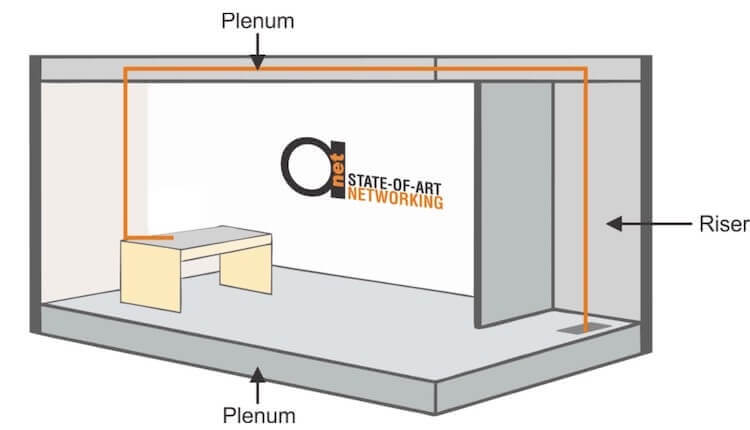
Cable rating is also an important thing to look after as it determines where the cable can be used for. If you intend to install cables in building network installations, you should first consider the appropriate type of cable and jacket material to use.
Ethernet cables with CMP rating can replace cables with CMR rating, but CMR cable cannot replace CMP cable in plenum spaces. Here’s why.
Plenum-Rated Cable
Plenum-rated cable is a type of indoor cable that is installed in plenums. It is meant to be installed to areas which are prone to the spreading of fires within buildings as they support airflow for HVAC. Thus, plenum-rated cables are designed to eliminate fire potential hazard through their fire-resistive sheaths.
Riser-Rated Cable
Riser cables are intended to run between floor installations in non-plenum areas. These are to be manufactured in adherence to strict industry standards to prevent the spread of smoke and flames. CMR riser rated Ethernet cable is jacketed to be flame retardant and avoid spreading fumes.
Outdoor Cable
Outdoor cables may be classified as Aerial cables or Direct-burial cable. These cables are exposed in harsh environments to face UV radiation and other elements.They are jacketed with a strong thermoplastic (UV PVC) to withstand extreme temperatures. Options may come as gel-filled, waterproof tape, aerial wire, and PE-jackets.
Choosing the Fastest Ethernet Cable for your Specific Application
The ultimate question here is, what are you going to be using the Ethernet cable for? This gives a much clearer objective to decide on how you can choose what Category cable suits your needs. This will eventually save you time and a lot of money.
Down below, you will find a list that defines each objective. You may click on the link inscribed that corresponds to what you need an Ethernet for to read ahead.
Are you
- a company or a data center looking to connect multiple computers, laptops or Wifi equipment to an internet source for web access and data transfers?
- looking to connect Ethernet cables in an industrial setting with harsh environment considerations?
- a work-at-home, home-based worker or freelancer needing stable internet access and large bandwidth capabilities for home network connectivity?
- an avid online gamer connecting to multiplayer games or someone who links in PlayStation (PS4) and Xbox?
Best Ethernet Cable for Data Center Networking
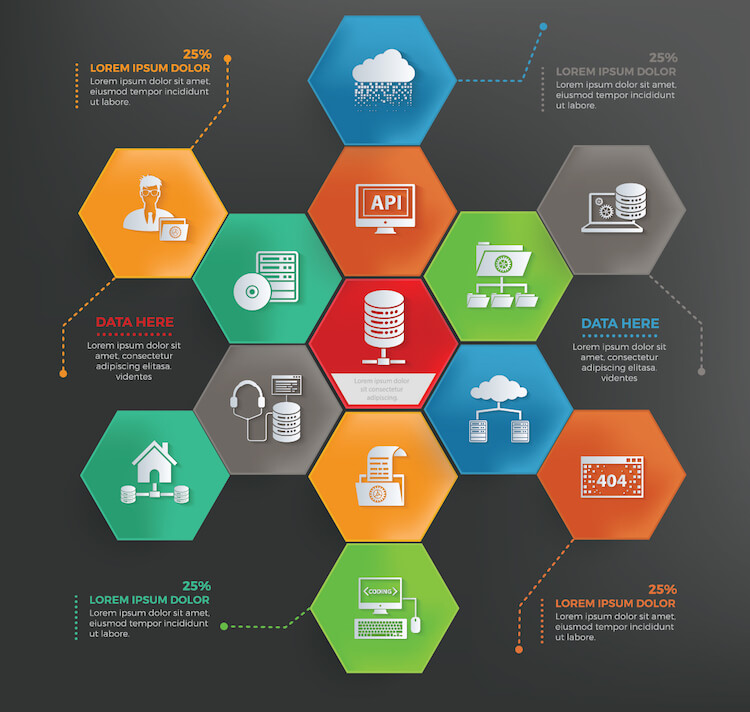
In Data Centers or commercial setups, networks provide clients and servers with a common sitemap that carries out tons of workloads. This also means managing different access networks from multiple data source.
With the growing information bank needed to meet the demands of your network, you need to future-proof your data network system. With this said, you can go with the latest cable Cat6a or Cat7.
If you’re currently using Cat5e, it may still cope up with the fast network speeds today, but the fast-paced development may not keep up soon.
Deciding on Ethernet Cables for a Rugged Industrial Setting
Selecting Ethernet cables for harsh environments to increase reliability and performance and optimize your capital
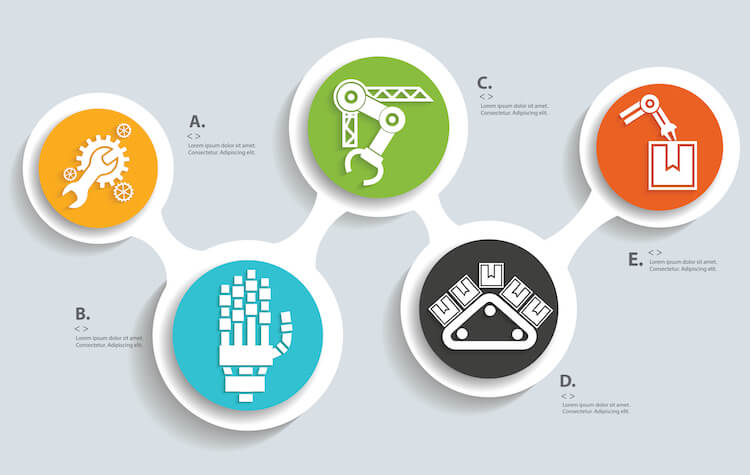
There’s no doubt that the office setting is a lot different from the industrial environment. Where cables are stacked neatly and protected in data center cabinets, it doesn’t follow in heavy machinery plants, chemical industries and heavy equipment grounds. The cables, routers, switches and other network components are exposed in tough environments and used in the machinery’s automation and instrumentation.
You can practically lose thousands when you use a not so suitable cable option for your specific industrial application.
Consideration #1: Identifying what part of the plant the cable will be situated
You will have to know where you will be installing the cable.
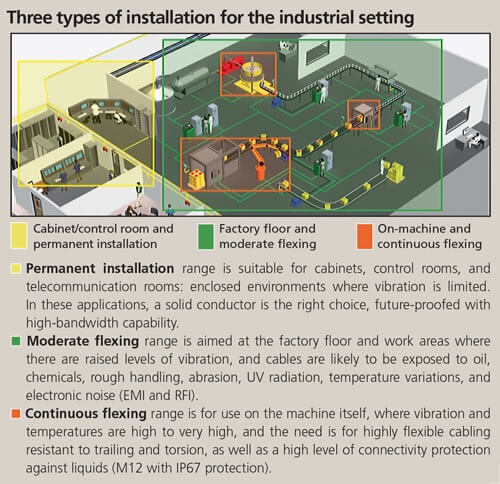
Consideration #2: Speed and Bandwidth Requirements
Specify what speed your overall system would need for data transmission. You can choose Cat5e for 100Mbps or 1Gbps, up to Cat8 for 10Gbps high-speed Ethernet communication.
Consideration #3: Jacket then Shielding
Now you can decide on the shielding. You can basically choose whether to shield or not. If you’re expecting machines with high interference and noise, the foil or braid shields is a suitable pick.
You can always consult OTSCABLE if you are not sure what cable to use.
Best Ethernet Cable for Streaming
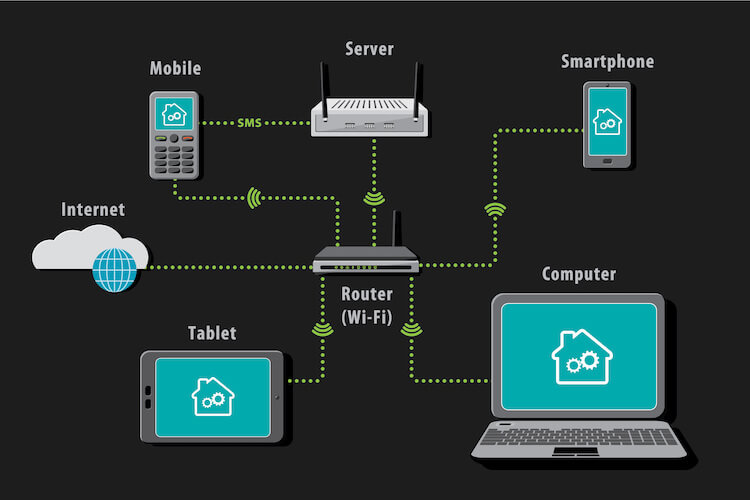
Cat5e cable is generally acceptable for domestic network use. Basically, what people are looking for is a stable source of network connectivity for streaming.
But if you are to transfer large files that consume a lot of data all the time, like you have a small office at home or is freelancing, Cat6 is a recommended choice.
Just keep in mind that all of your Ethernet equipment should be compatible with higher speeds as when you install a lower grade cable with a higher generation cable, you’d end up slowing down your connection at that point.
Cat6A is only a few cost away from Cat6 so you might want to consider this for future-proofing your network system.
For Cat 7 cables offer premium shielding that can maintain speeds over longer distances. Using this for home Ethernet though would cost you a lot but it is recommended for those who want the latest and most advanced network cabling solution.
Best Ethernet Cable for Gaming
Games such as Call of Duty or Fallout needs speedier networks and ping rates than the common chess games. Gaming industries and consoles require high speed networks. For this you can use Cat6 cable.
An existing Cat5e cable can work for today’s demands, but unlikely to deliver better performance once an improvement of the network may be available. Before choosing your cable, just make sure it can accommodate the speed your ISP delivers. Common applications for Ethernet cables in gaming are PS4 LAN cables.
Setting Up Your Ethernet System Installation
By now you have the idea on what Ethernet cable to choose. It’s time to prepare for your Ethernet cable installation.
When running cable installation, it is best to follow a few simple rules:
- Make sure to use more cable than you need. You can purchase bulk cables if you are not sure of the total length you need.
- Test every part of your network while you install the cables.This is to make sure that if problems may arise, there will be no need for isolating later, which is much more difficult.
- Maintain a 3 feet distance away from fluorescent lights and other electrical interference sources.
- If cables are to be run across the floor, cover the Ethernet cable with cable protectors.
- Label both ends of each cable and use cable ties or tape to fasten the cables.
You will need these tools if you are installing Ethernet cables on your own
If pre-made cables may not be favorable for your application, you can create your custom cables depending on the exact length you need. Here are the tools you will be using:
- Bulk ethernet cable
- RJ45 connectors
- RJ45 crimping tool
- Relief boots
- Pliers, Wire cutters, wire strippers, or scissors
Wiring Ethernet Cables
1. Remove a portion of the wire sheath about 1 or 2 inches.
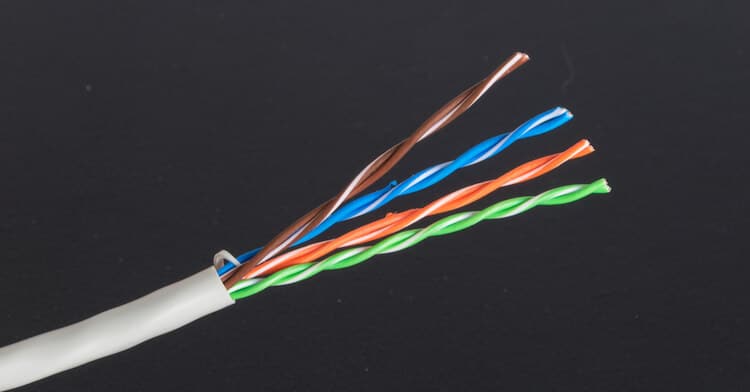
2. Carefully untwist the 4 pairs of wires. Be careful not to untwist it beyond the stripped portion.
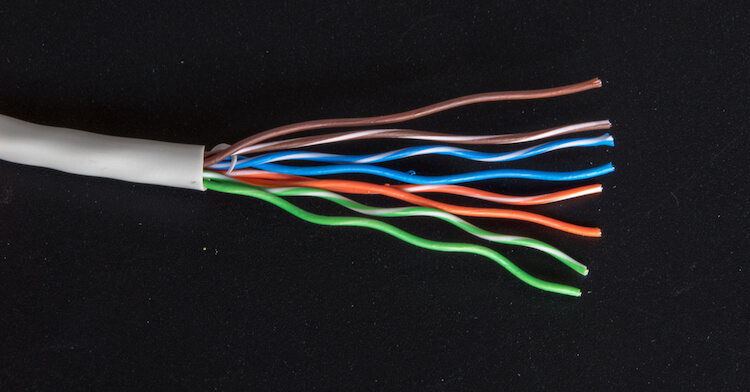
3. Inside, we can see an orange pair, brown pair, green pair, and blue pair. Align the colored wires according to the TIA T568B Wiring Standards.
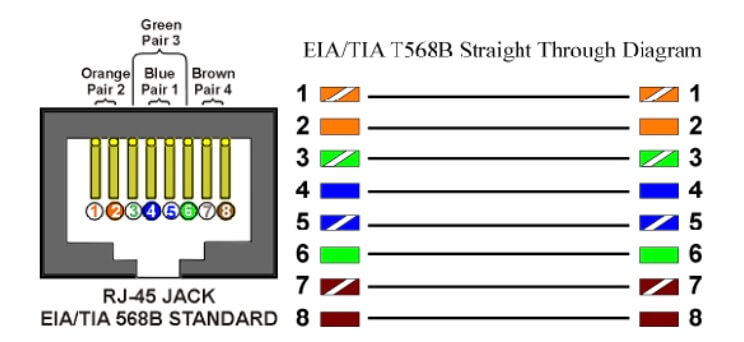
4. Arrange and straighten the wires then cut at a perfect 90-degree angle from the cable.
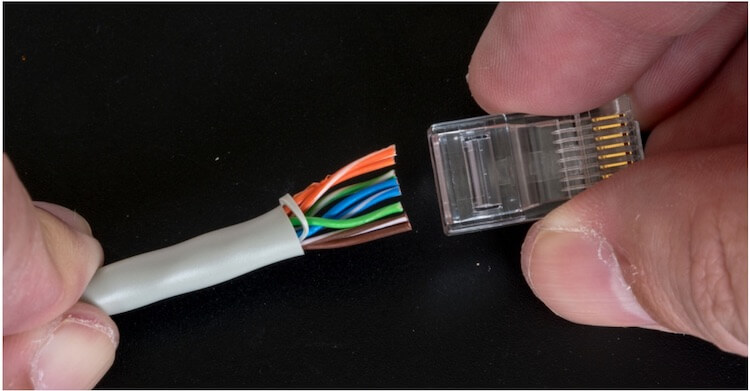
5. Insert the wires into the RJ45 plug - make sure each wire is fully inserted to the front of the RJ45 plug and in the correct order.
6. Crimp the RJ45 plug with the crimper tool.
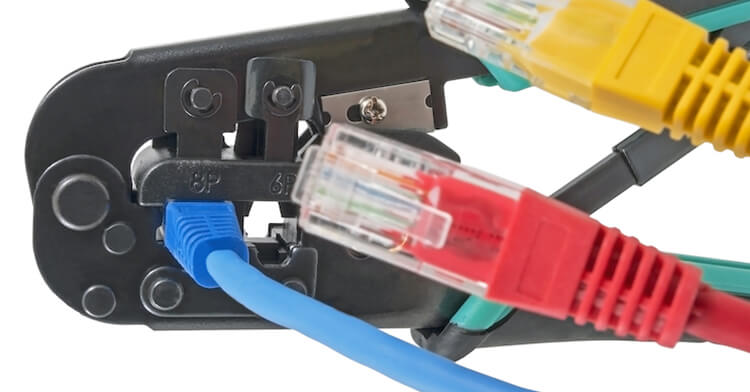
7. Repeat the above steps for the second RJ45 plug.
How to Set Up an Ethernet Cable Installation?
Once all the cables needed are ready, you can then lay out your cables to the location. Here are the steps:
Planning the Layout of the Ethernet Installation
A layout of the location indicating the wiring path, the number of ports per room, the strategic locations of ports, as well as the network equipment.
Organizing Tools and Materials
Here are the basic tools to set up your Ethernet cables.
- An Ethernet crimping tool
- Power drill for drilling holes and faster screw placement
- Hole saw and hand saw to create bigger holes, markers, and measuring instruments. Also, consider a cable tester to test out each cable once installed.
Mounting the wall plates and installing the cable
Once you’ve decided where to mount the wall plates, cut them using a saw and fasten it in place. Repeat this for all locations that are planned to be placed with the wall plates.
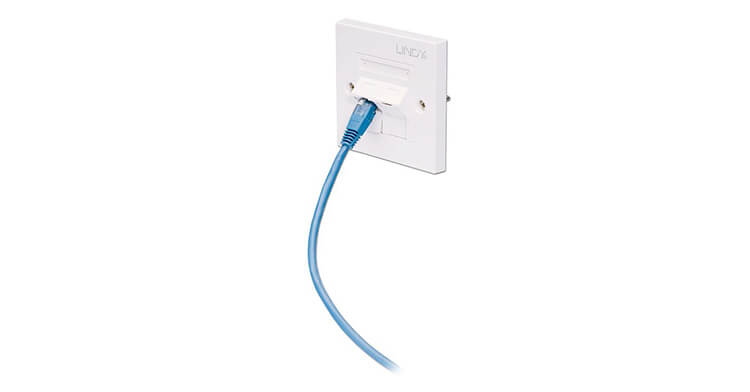
For estimating the length of the cable, you can use floor plans, or you can run the cables yourself. Take note that there may be a possibility to make mistakes, thus it is best to add an extra length to all your cables. After which, you can then drill out holes for the cable to go into the walls and connect to the ports.
Connecting Ethernet Cables to your Device or Equipment
Modem to Router
Your Ethernet cable from the modem connects to the router’s Internet or WAN port.
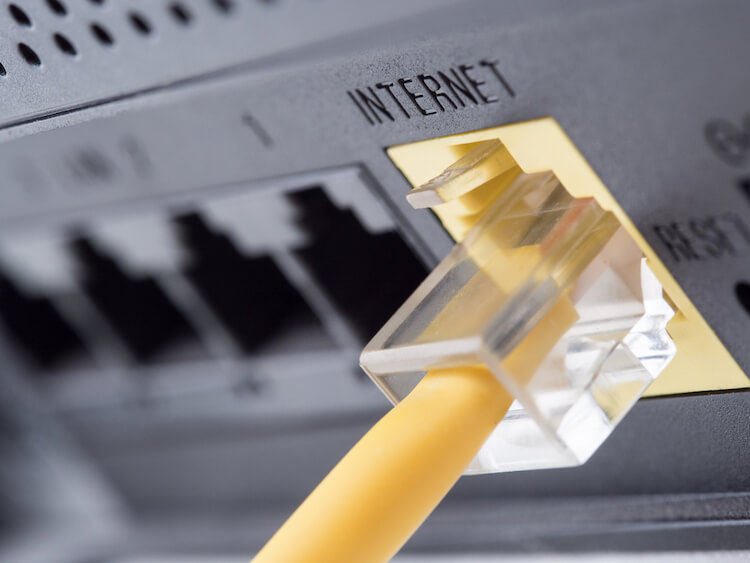
Router to wired devices
The Ethernet cables from your devices should be connected to any of the numbered ports at the back of the router (1, 2, 3 or 4).

Modem to Router, Router to Computer
In a home network, the most common Ethernet connection setup is modem to router and router to computers or other networking devices that use Ethernet cables.
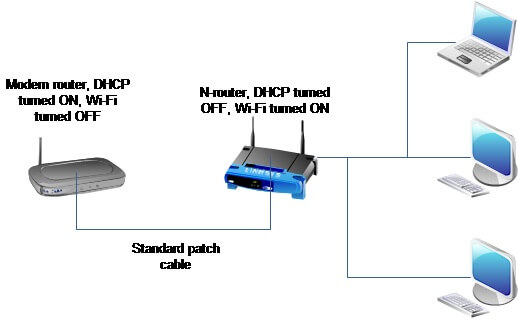

Test your connections
Using a cable tester, diagnose your cables if they provide a stable connection.
How to buy Ethernet Cables
At this point, you most certainly have equipped yourself with the know-hows on Ethernet Cables. See, the path to a great network cabling schematic is not so narrow after all. But when you get to a point of placing a price over it, you should also know your money’s worth over a certain length of Ethernet cable you buy.
What are the things you need to know before you buy your Ethernet cable?
Consider the Cable Length
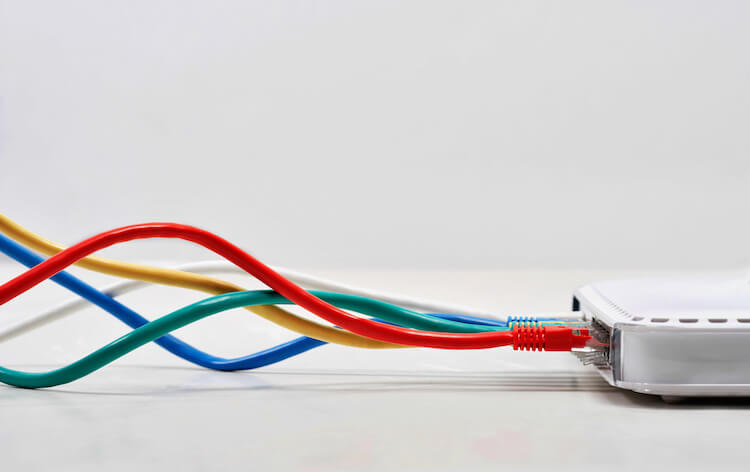
Ethernet Cables vary greatly in length in the market, but its maximum optimal distance of usage would only be about 100 meters without the usage of repeaters. A friendly (and important) reminder though: DON’T buy an Ethernet cable if it’s under 10 feet.
Consider the Cable Price

Being a smart guy, you would probably look for the cheapest, bottom-of-the-heap Ethernet cables. The sneaky part in buying cables is that they could offer you a cheap deal of about $5 for say 5-feet of cable, but you can actually buy a roll of 50-foot Ethernet cable for only $10 - giving you about 80% cost savings! You just have to go to the right places.
How to find reliable Ethernet Cable Suppliers/Manufacturers?
There are times that you will stumble on a low priced cable but it ends up that this cable is not worth it at all. Branded ones promise high performance but are often times out of your budget.. Good thing is, you can find reliable China cable manufacturers online offering great deals.
OTSCABLES is a China cable exporter specializing in manufacturing and supplying Ethernet cables in bulk or in patch. You can customize the color of the cable you want as they have a wide variety of color options.
We offer cables ranging from Cat5e to Cat8 with shielded or unshielded options. We also have a range of indoor or outdoor cables. We can also customize the cable jacket, color and features of the cable for your specific needs. What’s more is you can request for a free cable sample to inspect the cable. You can easily contact us online for more inquiries.
Conclusion
The bottom line is, choosing the right Ethernet cable determines the success (or failure) of your network system. If you pick the inappropriate cable, you will find a hard time getting your network to function effectively. This means losing a lot of expenses and struggling on system downtimes. We’re hoping this definitive guide will help you in the process of selecting and buying Ethernet cables.

